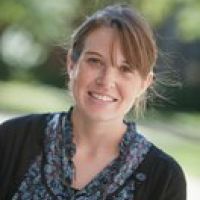Weitzman & Kaye, 2015
The Paradox of High Subsurface [N2O] and Low Surface Flux of N2O to the Atmosphere
Weitzman, Julie N. and Jason P Kaye (2015)
B13G-0702 The Bioatmospheric N Cycle: N Emissions, Transformations, Deposition, and Terrestrial and Aquatic Ecosystem Impacts III Posters, presented at 2015 Fall Meeting, AGU, San Francisco, CA, 14-18 Dec.
-
Shale Hills, GRAD STUDENT
-
Shale Hills, INVESTIGATOR
Abstract
Soils are the main contributor of N2O emissions to the atmosphere, as documented by many measurements of N2O efflux at the soil surface. Different soil layers can act as sources or sinks for N2O, depending on N2O consumption and production by microorganisms, diffusion through the soil profile, and dissolution in soil water. Our research sought to identify and quantify sources or sinks of N2O in surface and deeper soils to improve our ability to predict fluxes of N2O from soils to the atmosphere.
We monitored the vertical profiles of soil N2O concentrations (0-160 cm depending on thickness) along two contrasting hillslopes (swale versus planar) and three landscape positions (ridgetop, midslope, and valley floor) in the Susquehanna Shale Hills Critical Zone Observatory (CZO) in central Pennsylvania. All landscape and hillslope positions had higher subsurface N2O concentrations (~800-3,000 ppbv) than soil surface concentrations (~320 ppbv), which were close to background atmospheric levels. Low soil-atmosphere fluxes measured in surface chambers suggested that much of the N2O produced at depth never reached the soil surface. Denitrification bioassays conducted on soil cores co-located with gas sampling positions revealed low potential rates of N2O consumption (<0.02 g m-2 yr-1), while dissolved N2O concentrations measured in the nearby stream were below ambient levels (<300 ppbv). These results suggest that the flux of N2O at the soil-atmosphere interface is low because diffusion limits transport from deeper soil layers. Models that link dynamic soil diffusivity with accumulations and depletions of N2O in the subsurface could improve our ability to predict surface-atmosphere N2O efflux.
Citation
Weitzman, Julie N. and Jason P Kaye (2015): The Paradox of High Subsurface [N2O] and Low Surface Flux of N2O to the Atmosphere. B13G-0702 The Bioatmospheric N Cycle: N Emissions, Transformations, Deposition, and Terrestrial and Aquatic Ecosystem Impacts III Posters, presented at 2015 Fall Meeting, AGU, San Francisco, CA, 14-18 Dec..
 This Paper/Book acknowledges NSF CZO grant support.
This Paper/Book acknowledges NSF CZO grant support.
Explore Further


